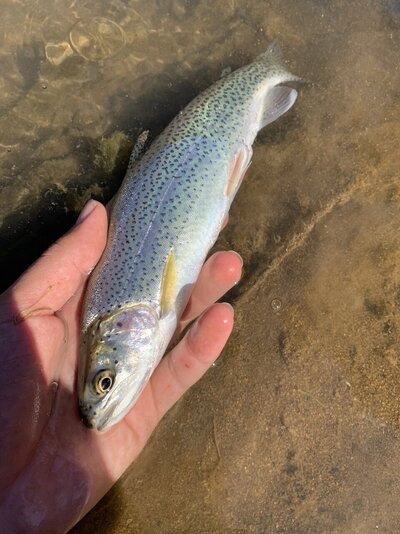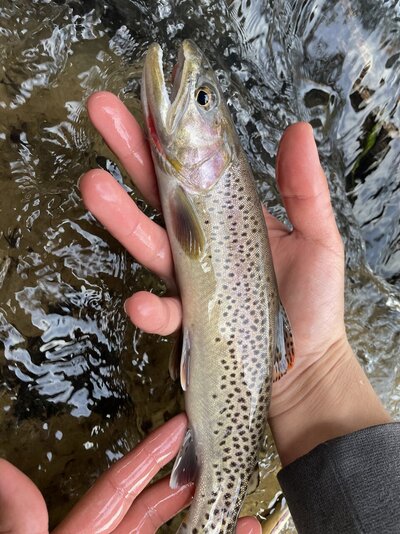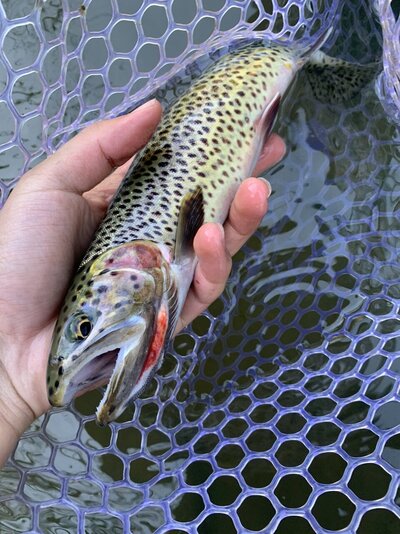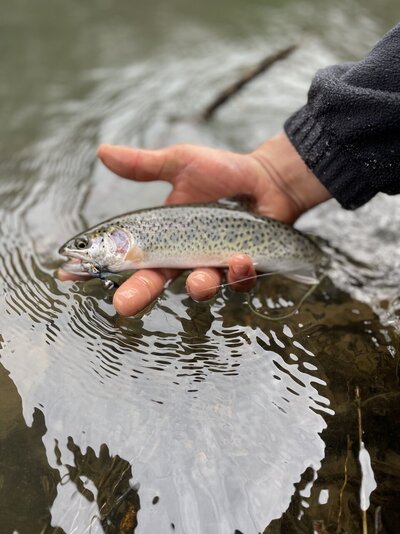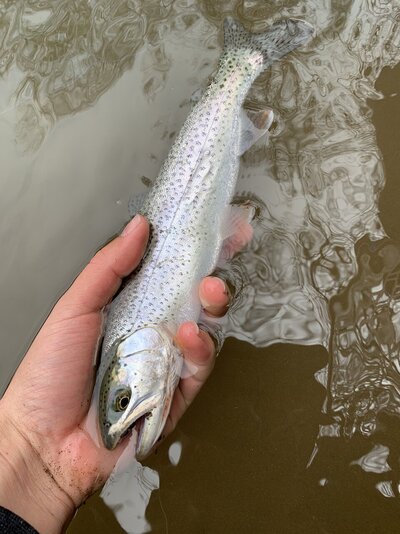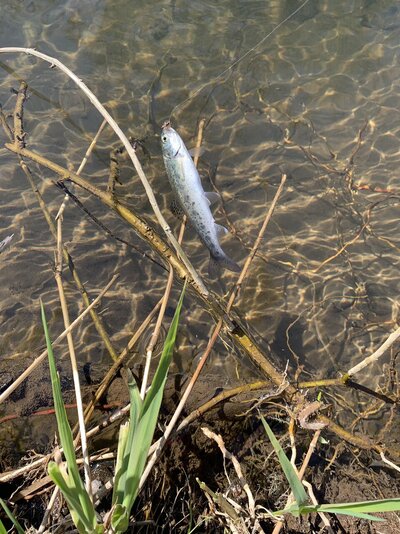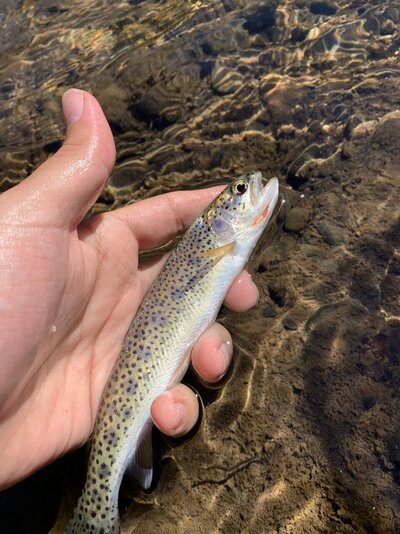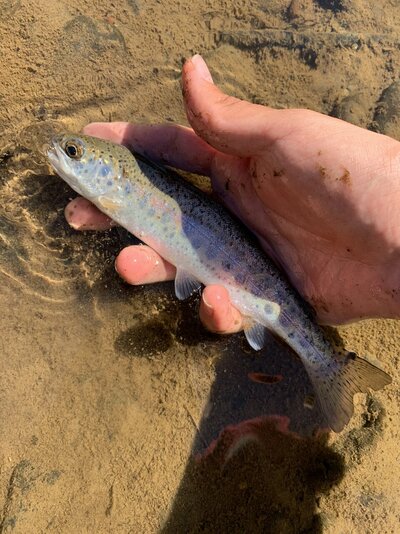F
Fred
Active member
I’ve been fishing for resident cutthroats with lures in some tributaries of the willamete river, and I’ve had succes. However, I’ve only gotten one trout on a fly. I could probably say it’s because I’ve hardly given fly fishing time, but my friend has fly fished almost exclusively and he hasn’t hooked a fish in the last 3 outings. He has caught a rainbow and some cutties on flies weeks ago, but recently nothings happening besides one baby rainbow on a reverse spider fly. If I fish the same holes with a lure I catch fish. My friend is using streamers, nymphs, egg flies, and dry flies. Any recommendations to improve our odds. Any flies that they like to hit, any way to rig it, tippet size, leader etc??
Also, since my local fly shop is closed, where can I find cutthroat flies near the Hillsboro area. Preferably outside of Portland. Additionally, my waders are leaking so any advice on patching or good waders I could buy. Also if you go fishing for cutthroats make sure the river/creek is open to fishing right now. Especially on the coast a lot of them are closed even for catch and release. This reminds me of a question I have. I remember reading a forum post and someone being mad at someone for keeping a trout from a tributary of the Tualatin. They said to go fish for sea runs in the coast because they’re more abundant and told them to leave the creek in peace. So my question is, if that’s true why are coastal rivers closed to fishing for cutthroat for a part of the year, but creeks that are apparently low in trout numbers open? Now I’ve heard they close it on the coast to protect spawned out cutthroats. So do residents on the other side of the coastal mountains not get spawning time protections? Anybody know why the regulations are like this? Also I bet steelhead fishermen catch a lot of cutthroats in their closed season. I wonder how that affects them. Also, I’ve read that many eastern flowing creeks and rivers of the coastal mountain range use to be closed to retention of cutthroat all year decades ago. Why would they open them back up to 2 trout a day if they’re aren’t in good conditions. Maybe this person was just confused on the health of cutthroat populations or maybe the regulations are messed up anybody have thoughts on this?? I’ve asked to many questions lol.
Here’s some of our catches.
Also, since my local fly shop is closed, where can I find cutthroat flies near the Hillsboro area. Preferably outside of Portland. Additionally, my waders are leaking so any advice on patching or good waders I could buy. Also if you go fishing for cutthroats make sure the river/creek is open to fishing right now. Especially on the coast a lot of them are closed even for catch and release. This reminds me of a question I have. I remember reading a forum post and someone being mad at someone for keeping a trout from a tributary of the Tualatin. They said to go fish for sea runs in the coast because they’re more abundant and told them to leave the creek in peace. So my question is, if that’s true why are coastal rivers closed to fishing for cutthroat for a part of the year, but creeks that are apparently low in trout numbers open? Now I’ve heard they close it on the coast to protect spawned out cutthroats. So do residents on the other side of the coastal mountains not get spawning time protections? Anybody know why the regulations are like this? Also I bet steelhead fishermen catch a lot of cutthroats in their closed season. I wonder how that affects them. Also, I’ve read that many eastern flowing creeks and rivers of the coastal mountain range use to be closed to retention of cutthroat all year decades ago. Why would they open them back up to 2 trout a day if they’re aren’t in good conditions. Maybe this person was just confused on the health of cutthroat populations or maybe the regulations are messed up anybody have thoughts on this?? I’ve asked to many questions lol.
Here’s some of our catches.
